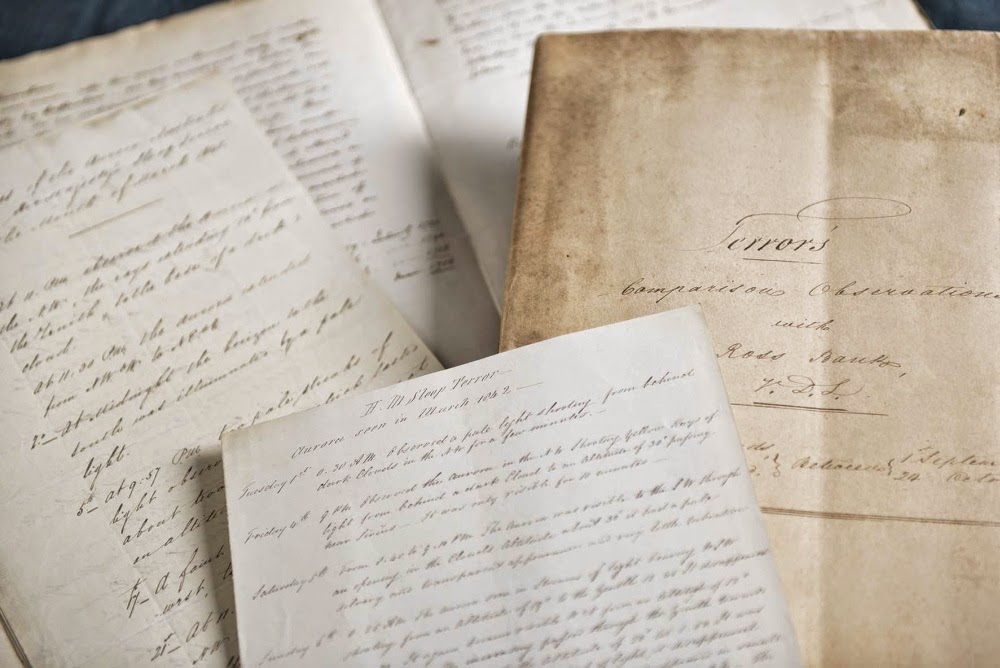‘Term day books’ from HMS Erebus and HMS Terror, 1840-1842, containing both magnetic and meteorological observations.
Sir John Franklin’s fabled lost expedition, back in the news last week after one of the ships was found by Canadian search vessels, was not the first time that the two ships HMS Erebus and HMS Terror set sail together on a voyage of exploration. Six years before Erebus and Terror departed England for the Arctic, they were beginning a four year expedition that would take them southwards to the Antarctic. On that journey they were led by Captain James Clark Ross, an experienced polar explorer, with the second in command (and commander of HMS Terror) being Francis Crozier. Crozier was captain of the same ship on Franklin’s expedition, and is reported to have taken charge after Franklin’s death, with some suggestions that he survived for several years afterwards.
One of the aims of both Ross’s Antarctic expedition and Franklin’s Arctic one was to collect magnetic data, and the data relating to the Antarctic can still be found in BGS’s collections today. Both HMS Erebus and HMS Terror recorded information relating to the earth’s magnetic field, as well as making meteorological observations such as details of aurora sightings. BGS holds similar records of many other Royal Navy ships, with data collected around the world throughout the nineteenth and early twentieth centuries. A list of Royal Navy ships’ geomagnetic log books held by BGS can be found here. Records of Ross’s expedition also live on in the names of many Antarctic landmarks – for example the Ross Ice Shelf, Ross Sea, and Ross Island with its two volcanoes Mount Erebus and Mount Terror.
See below for more images of records from HMS Erebus and HMS Terror.Term day book and other papers containing magnetic and meteorological observations from HMS Erebus, 1840-1843. James Ross’s signature can be seen in the centre.
Magnetic observations taken at Auckland Island (to the south of New Zealand), 5th December 1840, and Van Diemen’s Land (now Tasmania), May 1841, from HMS Erebus.
Papers from HMS Terror, 1841-1842. The document on the right compares magnetic observations from HMS Terror with those made at Ross Bank, Tasmania.
Francis Crozier’s signature on a document recording auroras seen from HMS Terror in March 1842.









